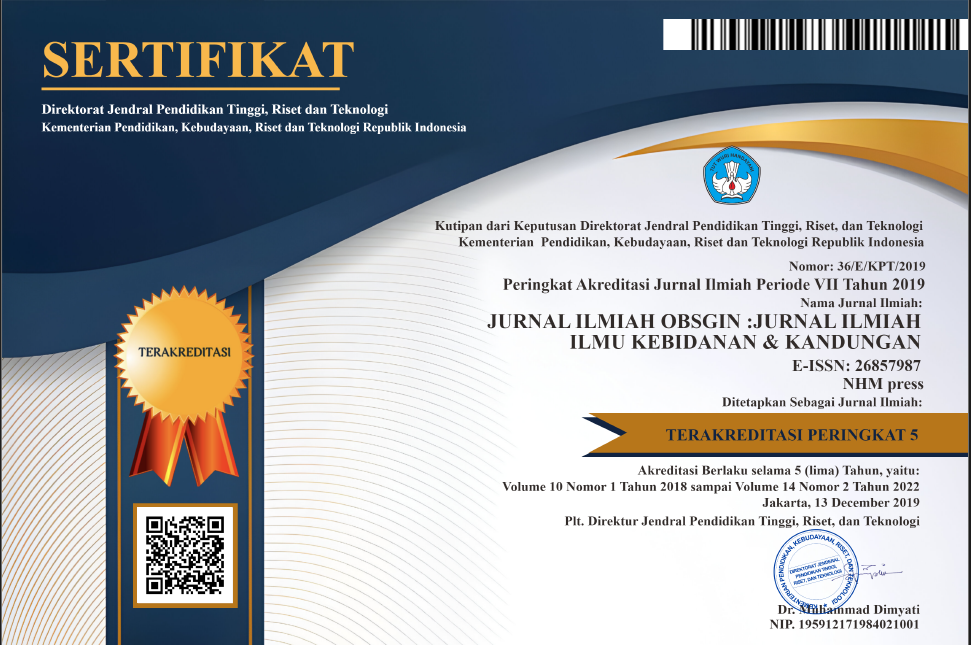Risk Factors of Smartphone Addiction on Pre-School Children in Indonesia: Path Analysis
Abstract
Generally, parents have introduced smartphones as their children’s learning facility, whereas children are groups of high risk for addiction. This study aims to analyze the risk factors of smartphone addiction on pre-school children. A cross-sectional study was conducted on 1392 mothers with children aged 3-6 years. The data were collected by using a questionnaire. The data were analyzed bivariate with chi-square by IBM SPSS 22 software and multivariate with path analysis by IBM STATA 13 software. The directly factors which make children addicted to smartphone are mother’s age (b= 2.12; CI 95%= 1.68-2.69; p= 0.000), mother’s occupation (b= 1.69; CI 95%= 1.35-2.12; p= 0.000), parents’ control (OR= 1.93; 95% CI= 1.55 to 2.40; p= 0.000), and smartphones ownership by children (OR= 1.69; 95% CI= 1.31 to 2.17; p= 0.000). Mother’s education, rules of smartphone usage in the family and rules of smartphone usage at school affects on children addicted to smartphone indirectly. There is a direct effect of mother’s age, mother’s occupation, parents’ control on the smartphone usage and smartphones child’s personal smartphone to the risk of smartphone addiction to pre-school children. Meanwhile, there is an indirect effect on a mother’s education, rules of smartphone usage in the family, and school effects to the risk of smartphone addiction to pre-school children.
References
Ardiyani, Ina Dewi, et al. “Education for Parents of Children with Gadget Addiction.” Jurnal Berkala Epidemiologi, vol. 9, no. 3, Sept. 2021, p. 221, doi:10.20473/jbe.V9I32021.221-230.
Bozzola, Elena, et al. “Media Devices in Pre-School Children: The Recommendations of The Italian Pediatric Society.” Italian Journal of Pediatrics, vol. 44, no. 1, Italian Journal of Pediatrics, 2018, pp. 1–5, doi:10.1186/s13052-018-0508-7.
Chiang, Jeng Tung, et al. “Transitions in Smartphone Addiction Proneness Among Children: The Effect of Gender and Use Patterns.” PLoS ONE, vol. 14, no. 5, 2019, pp. 1–12, doi:10.1371/journal.pone.0217235.
Fischer-Grote, Linda, et al. “Risk Factors for Problematic Smartphone Use in Children and Adolescents: A Review of Existing Literature.” Neuropsychiatrie, vol. 33, no. 4, 2019, pp. 179–90, doi:10.1007/s40211-019-00319-8.
Gladkaya, Margarita, et al. “We Need to Talk! Antecedents and Consequences of Children’s Smartphone Use - A Literature Review.” Americas Conference on Information Systems 2018: Digital Disruption, AMCIS 2018, no. July, 2018.
Heron, D., and NA Shapira. “Time to Log Off: New Diagnostic Criteria for Problematic Internet Use.” Current Psychiatry 2, vol. 4, no. 2, 2004, pp. 21–29.
Jennifer, I. H. M. “Social Implications of Children’s Smartphone Addiction: The Role of Support Networks and Social Engagement.” Journal of Behavioral Addictions, vol. 7, no. 2, 2018, pp. 473–81, doi:10.1556/2006.7.2018.48.
Lee, Eun Jee, and Yolanda Ogbolu. “Does Parental Control Work with Smartphone Addiction?: A Cross-Sectional Study of Children in South Korea.” Journal of Addictions Nursing, vol. 29, no. 2, 2018, pp. 128–38, doi:10.1097/JAN.0000000000000222.
Machmud, Karmila. “The Smartphone Use in Indonesian Schools: The High School Students’ Perspectives.” Journal of Arts and Humanities, vol. 7, no. 3, 2018, p. 33, doi:10.18533/journal.v7i3.1354.
Mehrnaz, Moattari, et al. “Smartphone Addiction, Sleep Quality and Mechanism.” International Journal of Cognition and Behaviour, vol. 1, no. 1, 2018, doi:10.23937/ijcb-2017/1710002.
Putri, Ayu Nuzulia, et al. “High-Risk Internet Addiction in Adolescents During Pandemic Covid-19 and Parents’ Role.” Jurnal Berkala Epidemiologi, vol. 10, no. 1, 2022, pp. 11–20, doi:10.20473/jbe.v10i12022.11.
Raman, Sajani, et al. “Screen Exposure During Daily Routines and a Young Child’s Risk for Having Social-Emotional Delay.” Clinical Pediatrics, vol. 56, no. 13, Nov. 2017, pp. 1244–53, doi:10.1177/0009922816684600.
Setiawati, Yunias, et al. “Relationship between Paternal and Maternal Parenting Style with Internet Addiction Level of Adolescents.” Iranian Journal of Psychiatry, vol. 16, no. 4, 2021, pp. 438–43, doi:10.18502/ijps.v16i4.7231.
Statista. Number of Smartphone Users Worldwide from 2014 to 2020. 2017, https://www.statista.com/statistics/330695/number-of-smartphone-users-worldwide/.
Terras, Melody M., and Judith Ramsay. “Family Digital Literacy Practices and Children’s Mobile Phone Use.” Frontiers in Psychology, vol. 7, no. DEC, 2016, pp. 1–11, doi:10.3389/fpsyg.2016.01957.











